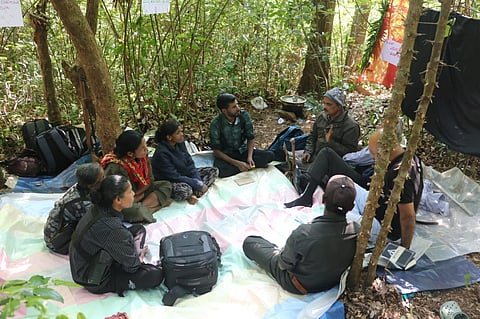The long march to surrender: How Karnataka became ‘Naxal-free’
In 1994, a decade after they first set up base in state, the Naxal group People’s War killed Umakanth, a landlord in Aurad, a town in Karnataka’s northernmost district Bidar. This killing marked the start of a cycle of violence that claimed the lives of Maoists, police personnel, people branded as police informants by the Maoists, and other civilians. Now, 41 years later, the government of Karnataka has declared the state ‘Naxal-free’ after eight cadres of the Communist Party of India (Maoist) surrendered recently.
As Karnataka declares itself ‘Naxal-free,’ the story of how it got here offers insights into both the limits of violent resistance and the efforts initiated by civil society activists such the late journalist-activist Gauri Lankesh and freedom fighter HS Doreswamy, to bring Maoists such as Noor Zulfikar back into the mainstream. Fourteen years after quitting the CPI (Maoist), Noor helped mediate the surrenders of Karnataka’s last band of rebels. However, internal contradictions within the Maoist movement and the rebels’ realisation that they had been isolated from the very people they took up arms for, also played a role.
On January 5, more than a month after Maoist leader Vikram Gowda’s extrajudicial killing by the Anti-Naxal Force, Chief Minister Siddaramaiah told the media that the government was in the process of bringing Maoists back into the mainstream. The killing was the last straw for the Maoist party’s Karnataka-Tamil Nadu-Kerala tri-state unit. Over the next few weeks, all the remaining members gave up arms.
The largest batch emerged from their hideouts on January 8, four weeks after Vikram Gowda’s death. This included Sundari from Dakshina Kannada, Mareppa Aroli from Raichur, Mundagaru Latha and Vanajakshi Balehole from Chikkamaglur in Karnataka, K Vasantha from Tamil Nadu and Jeesha from Kerala.
The group of six were feted by Chief Minister Siddaramaiah at his home with roses and a copy of the Constitution.

